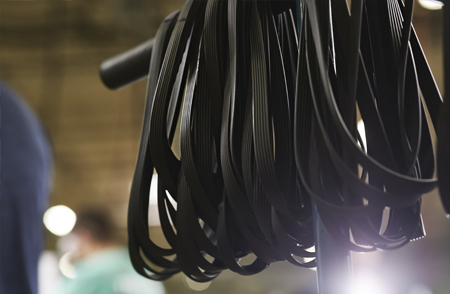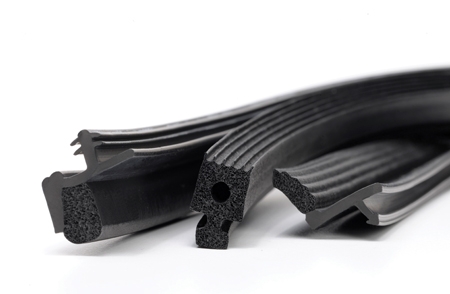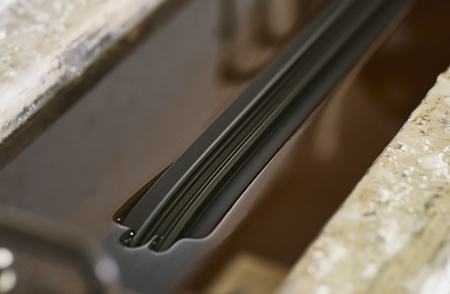ASTM Rubber Classifications
Rubber Classifications
Rubber is classified by many physical properties but generally falls under two primary classifications: Dense and Sponge rubber.
This page outlines properties that are necessary to consider when designing a seal or gasket product.
Choosing the right sponge product is important in proper seal and gasket design. Engineers must consider the following:
- Force in pounds per square inch required for proper closing
- How the seal responds to compression over time or to being compressed and released
- The elements the seal will be exposed to

.
The below technical information will serve as a guide to comparing materials with their physical properties. We also give a brief synopsis on how we classify flexible cellular materials based on:
- Type: Open or Closed cell
- Class: A, B, C, or D (characteristics of a material)
- Grade: 0 through 5 (compression deflection rating)
- Line call outs: (special industry specifications met)
- Suffix: A, B, C etc. (special tests required)

.
Classification of Flexible Cellular Materials
All of Cooper Standard ISG’s sponge products are identified by a three-character Grade Number (example: 2A2) per ASTM D-1056.
The three characters represent type, class and grade, and are defined as follows:
Type
- Type 1 = Open cell
- Type 2 = Closed cell
Suffix
Once testing is complete, a Line Call Out is assigned to the compound according to the basic and Suffix Requirements the compound met.
Suffix Letter Test Required
- A. Heat resistance
- B. Compression set
- C. Ozone or weather resistance
- D. Compression deflection resistance
- E. Fluid resistance (Fuel B)
- F. Low temperature resistance
- G. Tear resistance
- H. Abrasion resistance
- I. Adhesion resistance
- J. Water absorption
- K. Flammability resistance
- L. Impact resistance
- M. Staining resistance
- N. Resilience
- O. Density
- Z. Any special requirements
Class
- Class A = Non-oil resistant (example: EPDM)
- Class B = Oil resistant, low swell (example: Nitrile)
- Class C = Oil resistant, medium swell (example: Neoprene)
- Class D = Extreme temperature resistance (example: Silicone)
Grade
Grade ratings represent compression deflection, or the amount of force in pounds per square inch to deflect the sample 25% of its height. They are as follows:
- Grade 0 = less than 2 psi
- Grade 1 = 2-5 psi
- Grade 2 = 5-9 psi
- Grade 3 = 9-13 psi
- Grade 4 = 13-17 psi
- Grade 5 = 17-25 psi
Example Line Call Out for Sponge ASTM D-1056 2C2 A1 B2 E1 Z
(Z = material passes FMVSS 302)

.